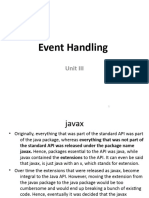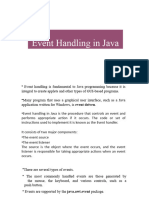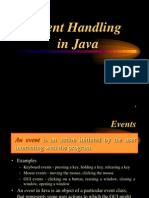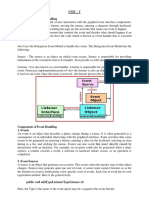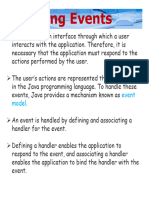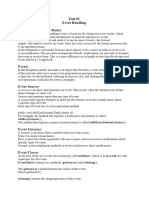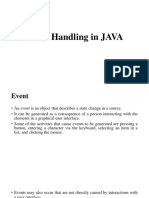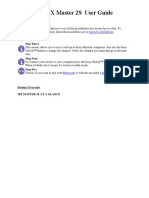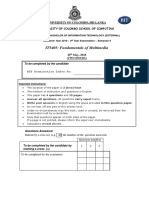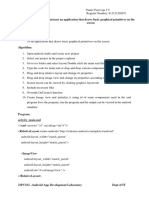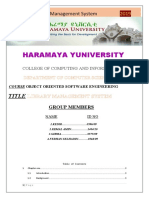0% found this document useful (0 votes)
27 views62 pagesEvent Handling
Event handling in GUI applications, such as those written in Java, is driven by user interactions that generate events, which represent changes in the state of objects. The delegation event model is a modern approach that separates event generation from event processing, allowing listeners to register for specific events and handle them accordingly. Key components of this model include events, event sources, and event listeners, with various classes and interfaces provided in the java.awt.event package to facilitate event handling.
Uploaded by
dhhdxhusCopyright
© © All Rights Reserved
We take content rights seriously. If you suspect this is your content, claim it here.
Available Formats
Download as PDF, TXT or read online on Scribd
0% found this document useful (0 votes)
27 views62 pagesEvent Handling
Event handling in GUI applications, such as those written in Java, is driven by user interactions that generate events, which represent changes in the state of objects. The delegation event model is a modern approach that separates event generation from event processing, allowing listeners to register for specific events and handle them accordingly. Key components of this model include events, event sources, and event listeners, with various classes and interfaces provided in the java.awt.event package to facilitate event handling.
Uploaded by
dhhdxhusCopyright
© © All Rights Reserved
We take content rights seriously. If you suspect this is your content, claim it here.
Available Formats
Download as PDF, TXT or read online on Scribd
/ 62








